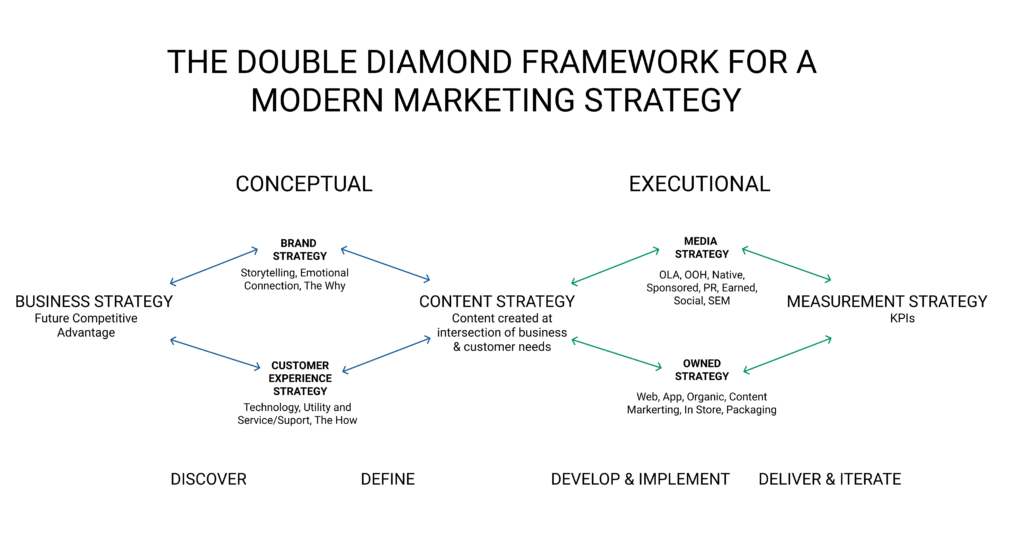You can’t be a designer without encountering the Double Diamond Innovation Model. The model goes something like this:
- Challenge (problem to solve)
- Discover (divergent design thinking and UX brainstorming methods)
- Define (convergent alignment on an approach and experience definition)
- Develop (prototype to an appropriate fidelity)
- Deliver (test and learn from users)
- Outcome (refine and launch)
It’s a great way to think about the design process, even if I prefer the design squiggle, where everything upfront is a chaotic, swirling squiggly line of the unknown that gradually morphs and straightens into a line of understanding. Noise. Uncertainty. Patterns. Insights. Focus. Brilliant.
As someone who’s been forced to justify a preference for going wide instead of deep in a world obsessed with specialization, I wanted to explore how my interdisciplinary tendencies might result in some original thinking. That’s why I decided to take the “Double D” innovation model and reshape it into a framework for marketing in a post-advertising world.

The Fox and the Hedgehog
Perhaps somewhere in my subconscious I’ve seen a similar marketing diagram or am “Frankenstein-ing” ideas from one of the many marketing, strategy, or design books that I’ve read over the years and have mostly forgotten – but have hopefully internalized.
As my brain calcifies (this condition is real, I don’t actually have it, I’m using it for comedic effect with mixed results), I’ve been forced to think of clever acronyms to remember most of what I’ve learned.
I’ll be writing a blog post soon about some of my favorite mnemonic devices that help signal a degree of T-shaped depth. Such domain-specific expertise is currently required to survive a post-Renaissance, post-management world in which certified Twitterati debate subtle title distinctions endemic to their white-collar knowledge mill professions.
Maybe I’m just a fox in a world of hedgehogs.
As an example, people who specialize in configuring personalization logic now call themselves content engineers instead of content strategists. The guy at Story Needle is a talented one. Definitely drilling his T-shaped intellectual jackhammer deep into the soil of Capital Ideas – in this case for content, not financial markets.
Maybe I’m just a fox in a world of hedgehogs. In his 2001 book “Good to Great”, business consultant Jim Collins coined “The Hedgehog Concept”, arguing that the best companies focus on one thing and do it well, lest they be unfocused and achieve very little like the fox trying to eat the hedgehog.
Fortunately for me, he cited Circuit City, Fannie Mae, and Wells Fargo as exemplars of the concept. I’m not necessarily saying unfocused conglomerates are any better, but it gives me hope in a world that values cross-discipline collaboration, network effects, and skunkworks projects.
For now, I think I’ll remain a fox. Even if it means being spiked by all those prickly hedgehogs questioning my worldview.
